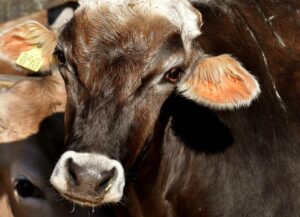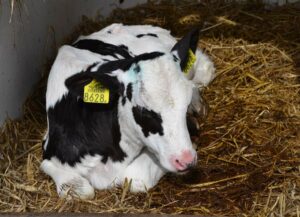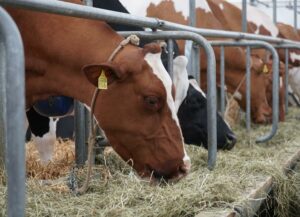Fernando Díaz
Subclinical ketosis is characterized by elevated levels of ketone bodies in blood, and it is one of the most common metabolic disorders in dairy cows during early lactation. Cows with ketosis reduce their dry matter intake and are more prone to develop other diseases such as metritis, and displacement of abomasum. Moreover, they decrease production and reproduction performance during the lactation. Therefore, careful monitoring of ketosis in dairy cows is vital for keeping cow health and productivity.
Ketosis is measured by determining the level of β-hydroxybutyrate, a ketone body, in blood, urine or milk either in the laboratory or using cow-side ketosis test in the farm. Recently, β-hydroxybutyrate levels are being measured in milk samples collected from routine Dairy Herd Improvement (DHI) visits using infrared testing.
Researchers from the Department of Population Medicine of the University of Guelph (Ontario, Canada) conducted a cross-sectional diagnostic study to validate whether this new infrared testing technique was as accurate as traditional laboratory testing to identify cows with hyperketonemia.
The researchers tested concentration of β-hydroxybutyrate in 316 cows from 17 herds in both milk samples using the DHI milk β-hydroxybutyrate test (MilkoScan FT600) and blood samples using an automated biochemistry analyzer. All sampled cows had less than 50 days in milk and were producing on average 36 kg of milk, 1.5 kg of milk fat, and 1.2 kg of milk protein.
Subclinical ketosis was defined as a β-hydroxybutyrate concentration of equal or above 1.2 mmol per liter of serum or 0.14 mmol per liter of milk. According to these values, 11.0 and 14.0 percent of cows tested positive for ketosis using the laboratory blood test or the DHI infrared screening technique, respectively. However, the concentration of β-hydroxybutyrate in DHI milk samples was moderately correlated with serum concentrations (0.63). The herd-level prevalence of hyperketonemia ranged from 0 to 43% (average: 14%).
Moreover, the authors found the number of days in milk and herd ketosis prevalence affected milk test performance. The sensitivity of the DHI milk β-hydroxybutyrate test, defined as the probability of testing positive for hyperketonemia in cows with a serum level of ≥1.2 mmol/L, was greater in cows with less than 25 days in milk (100%) than in cows with more than 25 days (91%). Similarly, in herds with high prevalence of ketosis (more than 14%) the sensitivity of the milk test was higher than in low-prevalence herds (83 vs. 75%).
In conclusion, this study demonstrated that DHI milk testing it is not a substitute for laboratory or on-farm ketosis tests, but it is a good tool for routine monitoring ketosis level on a herd level.
Reference
Renaud, D. L., D. F. Kelton, and T. F. Duffield. 2019. Short communication: Validation of a test-day milk test for β-hydroxybutyrate for identifying cows with hyperketonemia. J. Dairy Sci. 102:1589–1593.









